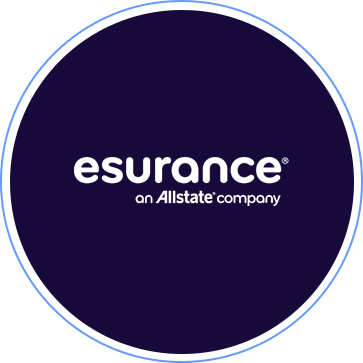Project Overview
I was brought onto the Esurance team in March of 2020. The initial project I got assigned was to update their FAQ pages for the entire claims process. At the time, the team was redesigning the flow of the claims experience, and wanted to add dynamic questions for each step. Yet, there was only one other UX writer, so they needed some extra hands. That’s where I came in.
Challenges and constraints
Since this contract was my first role in the insurance field, I already knew the most significant challenge: balancing digestible language with the terms the company was legally required to say. Often, I’ve been more confused by looking at an FAQ page than when I started. Some of the answers I’d seek would only lead me down a deeper FAQ wormhole. I was determined to change that.
Also, this was my first remote role. Fortunately, the team and company was equipped to transition into a work-from-home environment, but it took some getting used to. I’m a people person, so not being able to be in that physical space with others was an adjustment.
Diving into the content
The main document came to me as a detailed excel spreadsheet. It had multiple pages, a dozen questions on those pages, and all of it needed to be updated. That meant my favorite part: getting into the nitty gritty of the content.
After many meetings with designers, managers from different departments, and fellow writers, the team approved my edits. Since this experience was going to be dynamic, it was time to organize all the questions into their proper categories.
Time to organize
An important first step was to find the right category for each section. There came a point where I thought it would be beneficial to have questions before filing a claim, during the process, and after filing a claim.
Mockups
Along with writing, I was also able to explore some of my design skills for this project. The rest of the team was pretty well occupied with other projects, so I went ahead and made some design mockups to expedite the process.
This first one I called the “simple” approach. All the categories would be selectable items on the side, then met with a container of questions. Lastly, the user would be given the answer within the container, with the breadcrumbs above for reference.
And this is a version of what it would look like if there were subcategories.
The team liked this idea, but the concern for development resources frequently came up.
So, I mocked up a version that was more along the lines of how Esurance currently lay out their FAQ pages. The main difference being that I still applied a “categories” section on the side. All the content is still contained and people are able to see the answer, along with the highlighted question.
Above is a situation where the user might choose a category that has a lot of content. Applying Hick’s law, I wanted to chunk some of that content so that it wasn’t overwhelming. In addition, I also created a “view more” option to simplify the content on the page.
Key takeaways
I learned a lot during this project. I learned how to functionally collaborate with people in various roles and departments. From engineers, designers, product managers, and folks from Legal, I was able experience how an agile, cross-functioning team operates.

